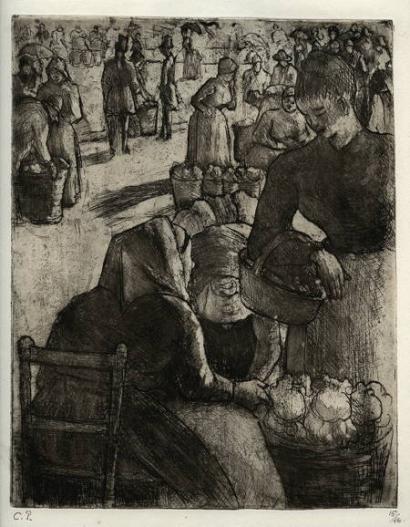- Bookmark / Share


- Delicious

- Scoopeo


- Technorati

- Digg

- Version française

CAMILLE PISSARRO
Impressions gravées
FROM 19 MARCH TO 11 JUNE 2017
One the greatest painters-engravers of all time
Camille Pissarro, Food Market in Pontoise, 1891. Etching and aquatint, 2nd state, 255 × 200 mm, Pontoise, Musée Camille Pissarro. |
MUSÉE TAVET-DELACOUR4, rue Lemercier - 95300 PONTOISE INFORMATION• Tel: 01 30 38 02 40
CURATOR• Christophe Duvivier, director of the Museums of Pontoise OPENING HOURS• Wednesday to Sunday
ENTRANCE FEES• Full Rate: €5
CATALOGUE• Camille Pissarro, impressions gravées, Somogy éditions d’art, 136 p., €25, by Michel Melot, former Chief Curator of Prints, Drawings and Photographs at the Bibliothèque nationale de France, and Christophe Duvivier, director of the Museums of Pontoise.
|
|
|
|
||

